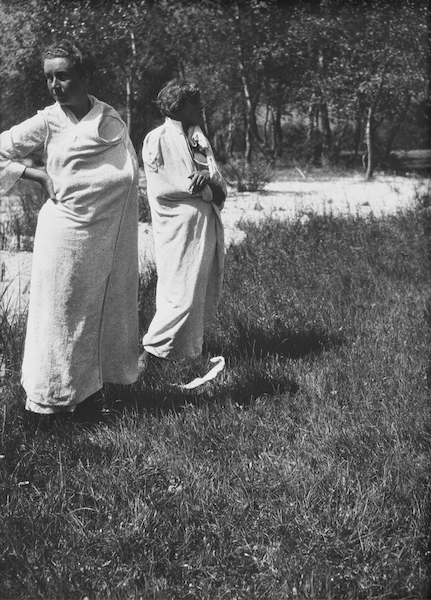Biography
László Moholy-Nagy is one of the most significant Hungarian artists of the world. A versatile avant-garde individual experimenting with a wide variety of genres, whose most prolific creative period was related to the art of Germany in the 1920s. His world fame is not only demonstrated by the volume of contemporary exhibitions and art projects about him, but also by the art market prices of his paintings.
László Moholy-Nagy was born in Bácsborsod in 1895, then began studying law in Budapest in 1913. As a law student, he attended Professor Négyessy’s famous seminars and wrote poems in the manner of Ady. Meanwhile, his artistic way of thinking was influenced by his best friend, the later renowned art critic Iván Hevesy. His legal studies were interrupted by World War I and he never completed them. In 1915 he was classified in the artillery of the Austro-Hungarian army. He began drawing during the war; recovering from his injuries, he made sketches about his fellow soldiers.
As a result of the horrific experiences of the war, he turned towards socialist idealism. Returning to Budapest, his poems and short writings, edited by Iván Hevesy, appeared in the present, while he attended Róbert Berény's evening drawing school. It was at this time that he began to become an artist, making figurative, expressionist images. He took part in group exhibitions at the National Salon in Budapest and got acquainted with Hungarian avant-garde artists. He exhibited in the Budapest Kunsthalle in March 1919, and then spent a few months in Szeged, where he exhibited with Gergely Sándor, the activist sculptor. At the end of the year, he traveled to Vienna, where he became a member the communist, anarchist circle of the MA organized around Lajos Kassák. He was influenced by the cubist, expressionist approach of Lajos Tihanyi and Sándor Bortnyik, as well as by the photographer Erzsi Landau, who showed him the possibilities of photography. In his first artistic stage, he made line graphics, his drawing style was a cubofuturist, analytical.
He then moved to Berlin where he was influenced by international Dadaism and Russian constructivism. In addition to his abstract compositions, he made industrial sculptures, collages, linoleum and woodcuts, and photograms. In 1920 his works were included in the exhibition of the Galerie Fritz Gurlitt in Berlin. In 1921, he married his first wife, writer and photographer Lucia Schulz, from whom he learned much about photography and experimented with perfecting the technique of photogram. From 1922 he exhibited regularly in the Der Sturm Gallery in Berlin and in the left-wing Novembergruppe with the Hungarian sculptor László Péri. His friends included many other avant-garde artists such as Raoul Hausmann, Hannah Höch, El Lissitzky and Ivan Punyi. From 1921 he became the Berlin representative of the MA in Vienna, and his Dadaist industrial landscapes also appeared in the Horizont album. The following year, a particular version of geometric abstraction, the painting he called glass architecture, became dominant in his painting. In 1922, he published the Book of New Artists in Hungarian and German with Lajos Kassák in Vienna. A year later, Walter Gropius invited him to teach at the Bauhaus in Weimar, where he became an extremely popular teacher. Here, in addition to running a metal workshop, he held introductory courses and designed Bauhaus book series. His time at the Bauhaus is considered to be one of the artist’s most prolific years. His most harmonious abstract paintings, photographs and photograms were born here. After Gropius left, he also left the Bauhaus and settled in Berlin again in 1928. She divorced Lucia and married writer Sibylle Pietzsch. Between 1929 and 1936, he began to explore the artistic possibilities of motion picture. He presented the kinetic structure of the Light-space modulator and regularly published his photographic publications in journals such as i10 in Amsterdam, Korunk (Our Age) in Kolozsvár, Dokumentum és Munka (Documentary and Work) in Budapest, and Telehor in Brno. After the Nazi takeover, he moved to Amsterdam in 1934, to London in 1935, and finally to Chicago in 1937, where he again became the director of the New Bauhaus-American School of Design, which had relocated overseas at the invitation of Walter Gropius.
After the New Bauhaus ceased to exist after a year for financial reasons, Moholy-Nagy, along with some of his staff, founded his own school, the School of Design, which in 1944 rose to the rank of college of the Institute of Design. The artist taught here until his death. In 1945, he completed his book Vision on the Move, in which he carefully structured the basic curriculum of the design school. In 1946, he died of leukemia at the age of fifty-one. Moholy-Nagy's artistic heritage, both intellectual and physical, is revered by growing international attention. Studies, exhibitions, documentaries and series of events commemorate his innovations in the art world over and over again.

